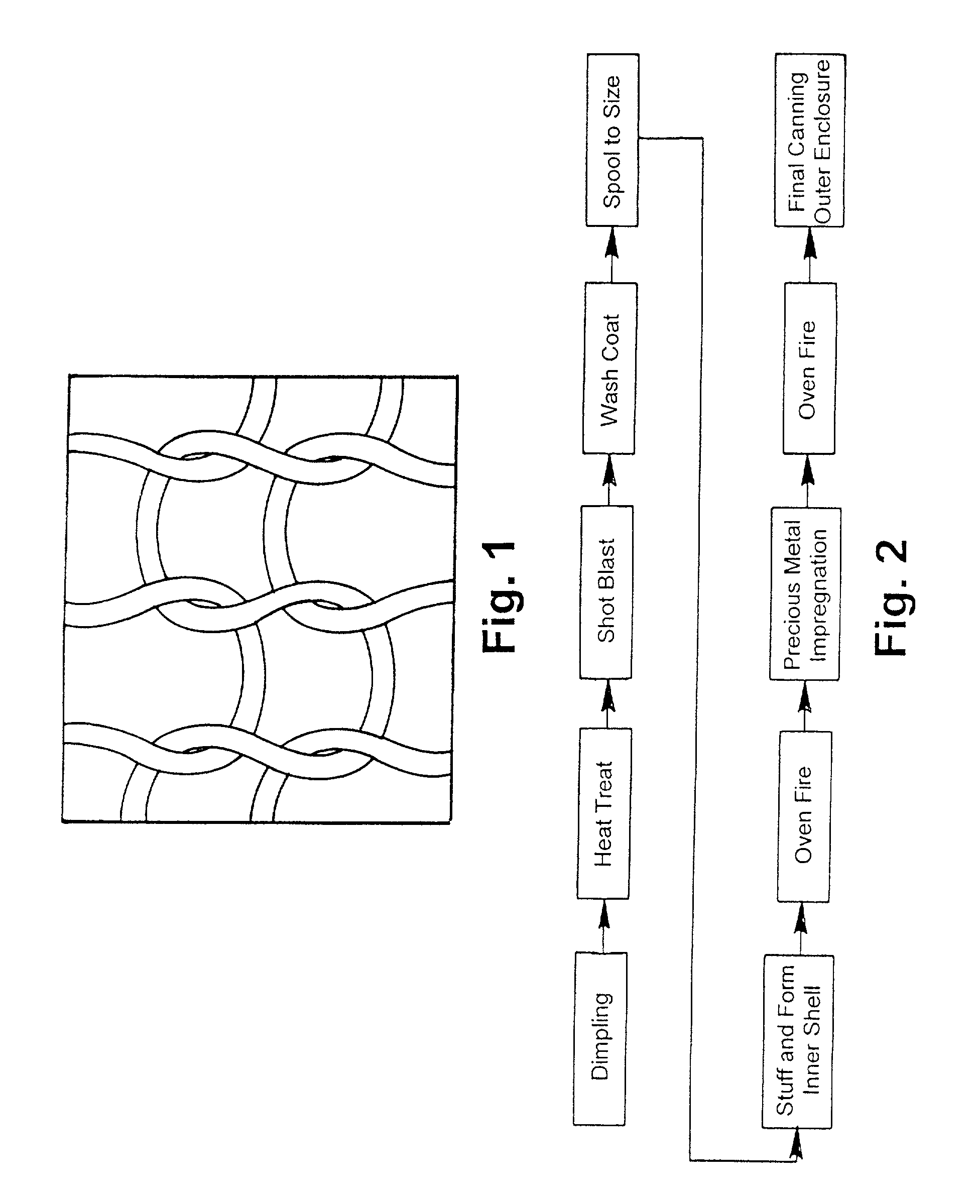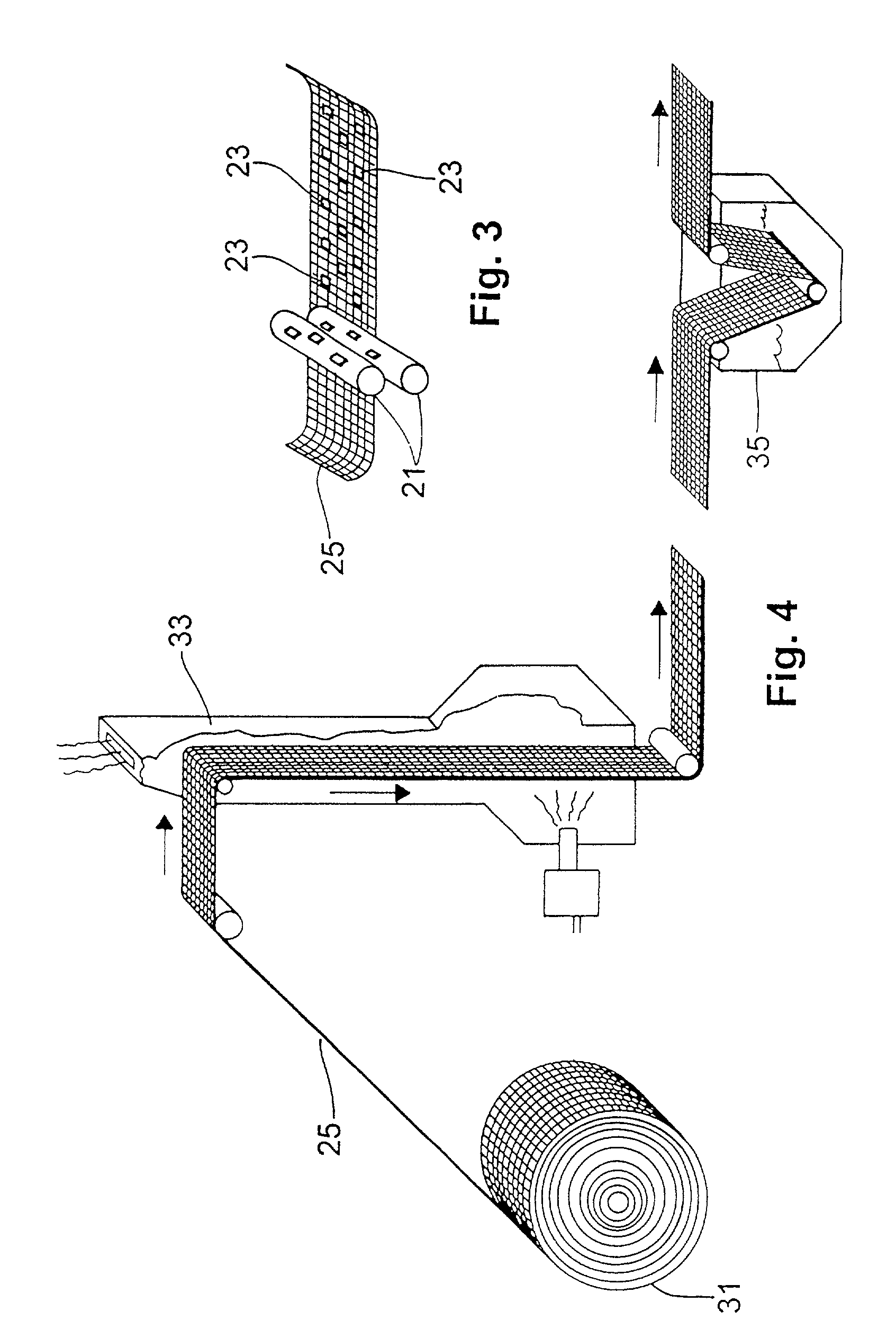Method of manufacturing a catalytic converter
a manufacturing method and catalytic converter technology, applied in the direction of catalyst activation/preparation, metal/metal-oxide/metal-hydroxide catalysts, machines/engines, etc., can solve the problems of extraordinarily high particulate oxidation rate and complete clogging of substrates, so as to reduce the center channeling and maximize the utilization of the entire matrix , the effect of increasing the residence time of particulates
- Summary
- Abstract
- Description
- Claims
- Application Information
AI Technical Summary
Benefits of technology
Problems solved by technology
Method used
Image
Examples
Embodiment Construction
[0049]Referring now to FIG. 1, a critical element of the present invention is the core substrate. As shown in this Figure, the substrate is made from a knitted metallic fabric which itself has an organized and repeatable pattern. The fabric has an open loop structure such that exhaust gas easily passes through it and may be a single or double-strand knit. The fabric is made of alloy wire threads which are knitted into a metal fabric that has a consistent pattern with uniform density and convenient widths such as 2″, 4″ and 6″ that can be of any length convenient for mass production, for example, 100 to 200 feet. The long rolls of fabric are then processed in a continuous manner to produce small substrate spools. The catalyzed metal fabric can be of any width or any desired knit density. The spooled reactor cartridge has 27 million loophole paths per cubic foot of volume however different knit densities may be employed as desired. The finished substrate unit provides a highly efficie...
PUM
| Property | Measurement | Unit |
|---|---|---|
| Angle | aaaaa | aaaaa |
| Temperature | aaaaa | aaaaa |
| Length | aaaaa | aaaaa |
Abstract
Description
Claims
Application Information
 Login to View More
Login to View More - R&D
- Intellectual Property
- Life Sciences
- Materials
- Tech Scout
- Unparalleled Data Quality
- Higher Quality Content
- 60% Fewer Hallucinations
Browse by: Latest US Patents, China's latest patents, Technical Efficacy Thesaurus, Application Domain, Technology Topic, Popular Technical Reports.
© 2025 PatSnap. All rights reserved.Legal|Privacy policy|Modern Slavery Act Transparency Statement|Sitemap|About US| Contact US: help@patsnap.com



